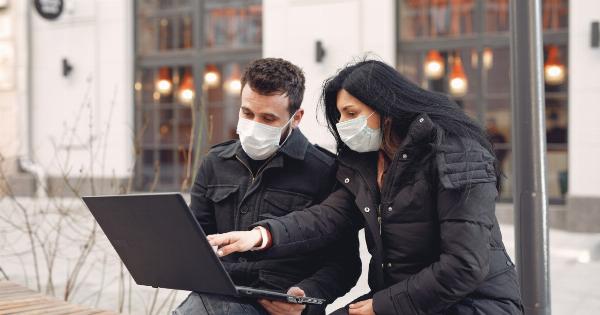As winter approaches, so does the risk of catching cold and flu viruses. While they both cause respiratory problems and share some mild symptoms, distinguishing between the two is crucial.
It will help you access the right treatment, stop the spread of the disease, and avoid health complications. This article covers everything you need to know about the flu and other viral infections, their symptoms, and possible complications.
What is Flu?
Influenza or flu is a contagious viral infection that affects the respiratory system (nose, throat, and lungs). The virus can cause mild to severe symptoms that often come on suddenly after exposure.
Flu outbreaks usually happen in the winter months and spread easily from person to person through droplets from coughing and sneezing.
According to the Centers for Disease Control and Prevention (CDC), seasonal flu viruses can cause severe illness, hospitalization, or even death among certain groups, such as young children, elderly people, pregnant women, and those with chronic health conditions. Symptoms of the flu include:.
- Fever or feeling feverish/chills
- Cough
- Sore throat
- Runny or stuffy nose
- Muscle or body aches
- Headaches
- Fatigue or tiredness
What are Some Other Viruses That Cause Cold-Like Symptoms?
Apart from the flu virus, several other respiratory viruses can cause cold-like symptoms and infections. These include:.
1. Human rhinoviruses:
Rhinoviruses are the most common cold-causing viruses, responsible for 30-50% of cold-related illness in adults. They can cause mild to moderate upper respiratory tract infections, such as runny nose, sneezing, coughing, sore throat, and fever.
2. Respiratory syncytial virus (RSV):
RS virus is a highly contagious virus that mostly affects children with weakened immune systems and adults over 65 years old. Symptoms may include runny nose, sore throat, cough, fever, and wheezing.
RSV can cause severe respiratory infections such as pneumonia and bronchiolitis, especially in people with weakened immune systems.
3. Parainfluenza viruses:
Parainfluenza viruses are common and can cause a range of respiratory infections, including mild colds, croup (inflammation of the voice box and the airways to the lungs), and pneumonia.
Symptoms include runny nose, sore throat, fever, cough, and wheezing. Like the flu, these viruses are often seasonal and spread quickly through person-to-person contact.
4. Adenoviruses:
Adenoviruses can cause a variety of flu-like illnesses, ranging from colds and sore throat to bronchitis and pneumonia.
People with weakened immune systems, such as those undergoing chemotherapy or organ transplants, are at higher risk of developing serious adenovirus infections.
How to Tell the Difference Between Flu and Other Viral Infections?
It can be challenging to differentiate between the various viral infections because their symptoms overlap. However, there are some key characteristics that can help distinguish the flu from others:.
- The flu typically causes a higher fever than other colds.
- Flu symptoms tend to appear suddenly and escalate quickly within a day or two after infection. Other viruses may develop more slowly.
- Flu often involves muscle aches and pains while other viral infections typically present with less body discomfort.
- The presence of additional symptoms, such as vomiting and diarrhea, may suggest other illnesses besides the flu.
Dangerous Complications of Flu and Other Viral Infections
While most cold and flu viruses resolve on their own within a few weeks, they can also cause severe complications in certain individuals. These can include:.
1. Pneumonia:
Pneumonia is a severe respiratory infection that can be caused by various viruses, including the flu. Elderly people, young children, and those with weakened immune systems may develop pneumonia or severe respiratory distress.
Symptoms include coughing up phlegm, chest pain, difficulty breathing, and rapid breathing.
2. Dehydration:
Vomiting, diarrhea, and fever can cause fluid loss, leading to dehydration and electrolyte imbalances. Severe dehydration can be life-threatening if left untreated.
3. Bronchitis:
Bronchitis is an inflammation of the airways leading to the lungs. Viruses like the flu can cause bronchitis, usually leading to symptoms including coughing, wheezing, and difficulty breathing.
4. Encephalitis:
Encephalitis is a rare but serious complication of some viral infections that affect the brain. Symptoms may include confusion, seizures, fever, and a severe headache.
Prevention and Treatment of Flu and Other Viral Infections
Preventing viral infections like the flu involves taking precautions to limit the spread of germs. The following tips can help prevent the flu or other respiratory viruses:.
- Washing your hands frequently with soap and water, or using a hand sanitizer when hand-washing is not possible.
- Covering your mouth and nose when you cough or sneeze.
- Staying at home when you are sick, and avoiding contact with people who are sick.
- Avoiding touching your eyes, nose, and mouth, especially when in public places.
- Getting a flu vaccine every year can protect against the most common strains of flu.
There are also various medications and home remedies to alleviate symptoms and facilitate recovery, such as:.
- Over the counter pain and fever medicines, like ibuprofen and acetaminophen.
- Antiviral medications, such as Tamiflu, relieve the flu’s severity and shorten the duration of the disease.
- Getting plenty of rest and staying hydrated is vital for combating viruses.
- Using a nasal saline rinse or humidifier to reduce nasal discomfort and improve breathing.
Conclusion
In summary, flu and other viral infections can cause similar cold-like symptoms and respiratory problems. However, understanding the differences between them is crucial to getting the best treatment and avoiding dangerous health complications.
Remember to take steps to prevent the spread of germs, practice good hygiene, and get appropriate vaccines to stay healthy during flu season.































